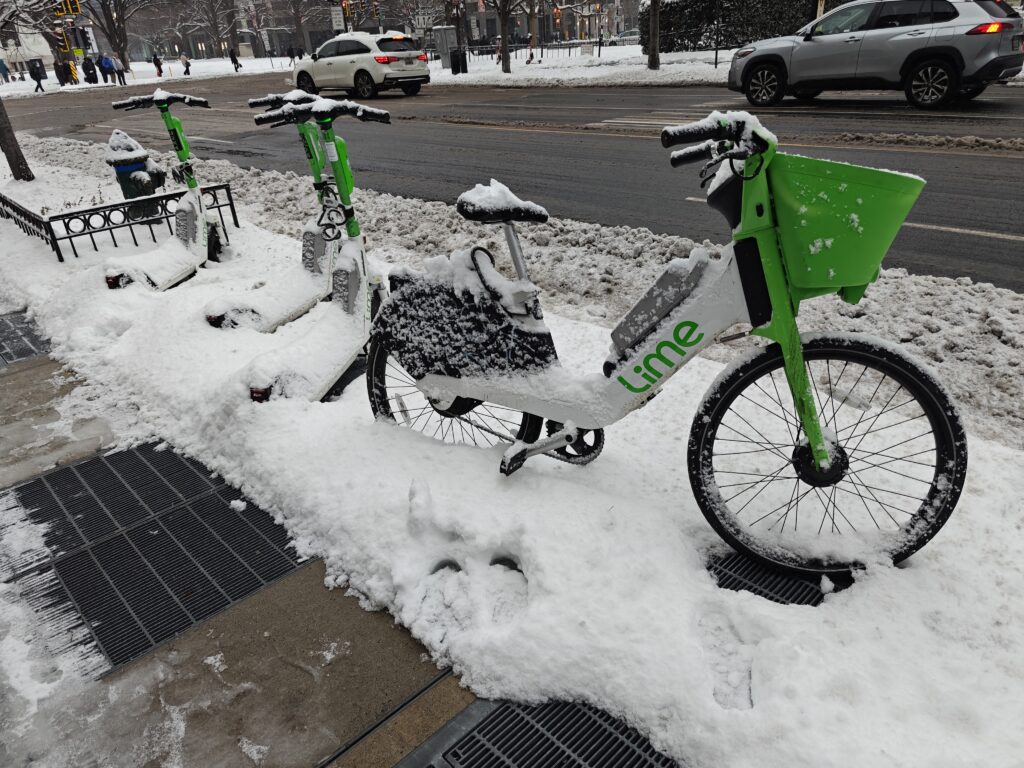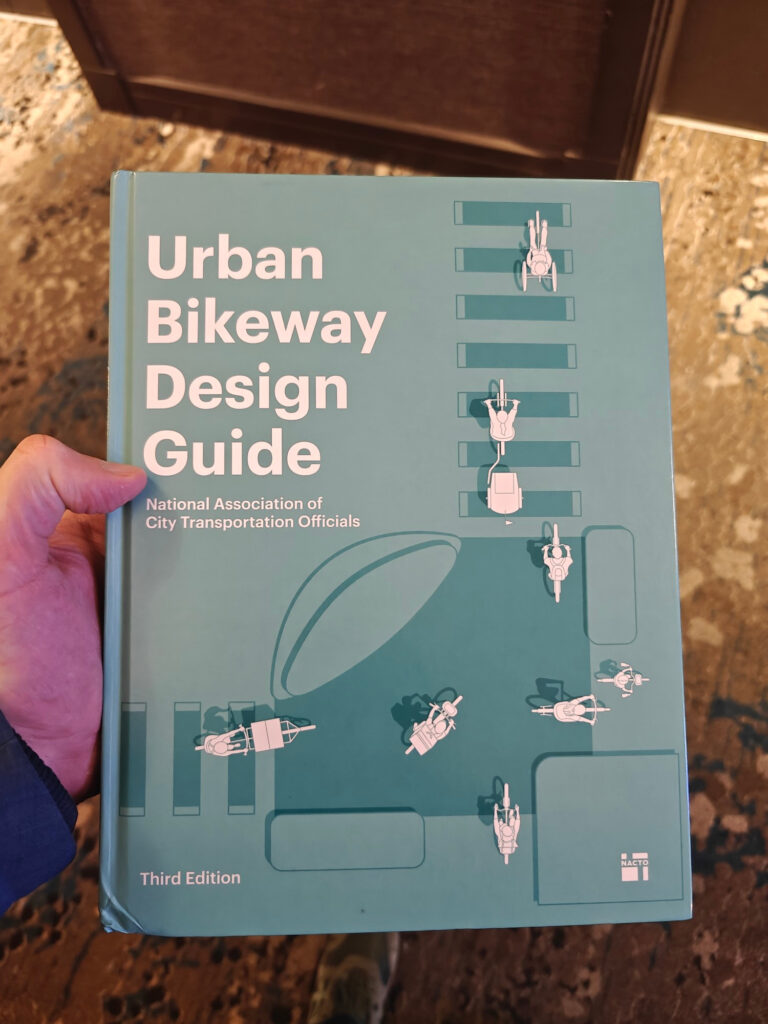DISCOVER YOUR LOCAL BICYCLING COMMUNITY
Find local advocacy groups, bike shops, instructors, clubs, classes and more!
Five Takeaways from the TRB Annual Meeting
The Transportation Research Board (TRB) Annual Meeting is one of the largest transportation conferences in the United States, perhaps in the world. This year was its 104th meeting and it regularly brings together researchers, agency leaders, policymakers, consultants, and others in the transportation industry for packed agendas in the cold of winter. Here are some of my takeaways from this year’s event.
- The show goes on, despite snow
TRB started on Sunday. Over Sunday night and into Monday, the DC area got between 5-7 inches of snow. Despite this snow event, TRB went on mostly without major disruptions thanks to the resiliency of DC’s transportation system. The DC metro, sidewalks mostly cleared by the DowntownDC Business Improvement District, and many attendees staying at nearby hotels allowed the conference to continue and for many of the nearby businesses to be open for breakfasts, lunches, dinners, and receptions. While not all attendees may have noticed, a robust multimodal transportation system was key to a successful event.

- What’s next for Vision Zero?
It was a theme of several sessions and research efforts that the United States was a decade into adopting the idea that traffic deaths are preventable and zero traffic deaths is the only acceptable moral goal for our transportation system. Key milestones in the Vision Zero movement, such as the Toward Zero Deaths National Strategy and New York City adopting Vision Zero, happened in 2014. But, as one researcher remarked “it’s beginning to look ridiculous” that the United States has nearly 10,000 more annual traffic deaths in recent years compared to 2014. There was a sense that safety professionals have made significant progress in defining Vision Zero within agencies, but that the broader transportation community and general public are still largely unaware of how a Vision Zero approach differs from business as usual. Moving from buzzwords and concepts to the complicated process of unwinding practices that are long-standing but at odds with a Vision Zero approach, such as reliance on driver speeds for speed limit setting, is the difficult way forward.
- Massive demand and need for active transportation
On Monday morning of TRB, the Federal Highway Administration announced the first round of grants under the Active Transportation Infrastructure Investment Program (ATIIP). ATIIP was conceived by the Rails to Trails Conservancy as a way to fund networks, not just individual projects, and was created by the Bipartisan Infrastructure Law, but did not receive funding in that bill. At the 2022 National Bike Summit, the League made funding ATIIP one of our “asks” and hundreds of attendees met with their representatives – ultimately resulting in $45 million being allocated to the program. In March 2024, an initial call for proposals resulted in 352 applications requesting more than $1.8 billion in funding, and in Monday’s announcement 14 projects received $44.5 million in funding. To put that in perspective, that is less than 4 percent of applications and less than 2.5 percent of costs, making the ATIIP more selective than universities like Stanford, Yale, and MIT. The demand for active transportation infrastructure is incredible and hopefully this incredible demand will lead to Congress allocating more funding to ATIIP in the future.
- Planning in the midst of uncertainty

With a new administration weeks away, there was a lot of uncertainty about the future at TRB. Nevertheless, TRB served as the launch pad for strategic plans, new guidance, and many other initiatives from researchers and organizations.
Most notable for bicycle infrastructure was the launch of the third edition of the National Association of City Transportation Officials’ Urban Bikeway Design Guide. Currently available for pre-order for $55, this Guide delves into not just designing individual bikeways, but designing bike networks to deliver safe and accessible infrastructure for more people who use bikes. I got to take a look at it and you can see some of my impressions on Bluesky.
Other initiatives that caught my attention were the ITE Safety Roadmap and Action Plan and the continued roll-out of IIHS’s 30×30 initiative to reduce roadway fatalities 30% by 2030. In committee meetings, it was also obvious that TRB was very focused on ensuring that its committees had strong strategic plans so that research would lead to improvements in practice, perhaps in response to reports like TRB’s “Tackling the Road Safety Crisis: Saving Lives Through Research and Action” produced last year
- Old-school lobbying
The halls of the Walter E. Washington Convention Center and adjoining Marriott Marquis are vast, and attending TRB itself is only part of what makes the event such a perennial feature of the transportation industry. Old-school lobbying, in the sense of hanging out in the lobby and talking to people who have come from all over to be there, is very much a part of the event. Organizations like the National Committee on Uniform Traffic Control Devices meet outside of TRB, leveraging its ability to draw people together and make meetings easier. While there were many great conversations at TRB, a special highlight was the FIA Foundation’s reception that brought together an incredible group of people leading on traffic safety issues. The ability to get value from TRB without actually attending it is one of its great assets.